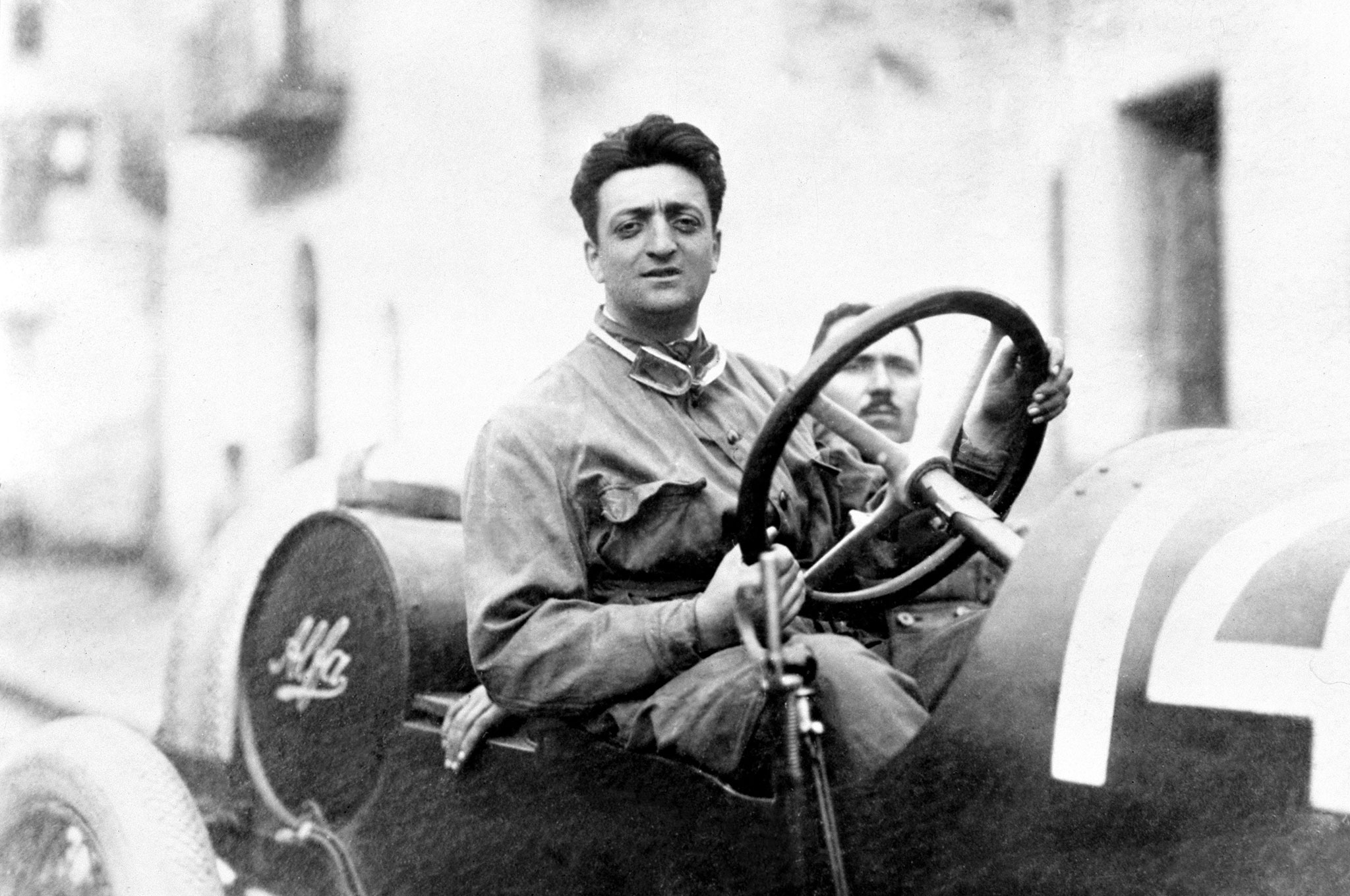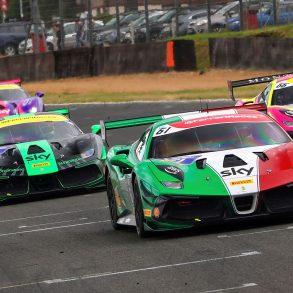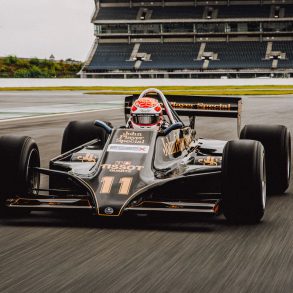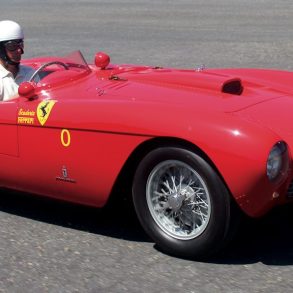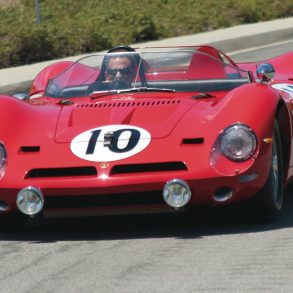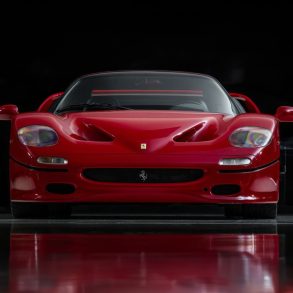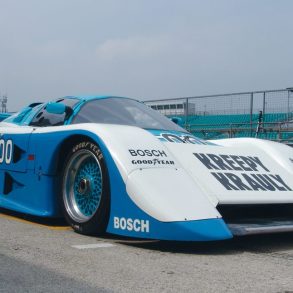Enzo Ferrari Biography
Enzo Ferrari was born in 1898 in Modena Italy. His father, Alfredo, ran a local metal-blacksmith business who forged axles for the Italian railways. When he was 10 his father took Ferrari and his brother Alfredo Jr. to an automobile race in Bologna.
There he saw Vincenzo Lancia battle Felice Nazzaro in the 1908 Circuit di Bologna. After attending a number of other races he decided that he too wanted to become a racing car driver. Ferrari’s formal education was relatively sketchy, something that he would regret in his later years. In 1916 tragedy, which would haunt Ferrari his entire life, struck his family to its core with the death of his father and brother in the same year.
He spent World War I shoeing mules but the world-wide flu of 1918 brought upon his discharge and almost ended his life. Looking for work he applied for a job at Fiat only to be turned down. Ferrari nearly starved for lack of work, something that would be seared into his consciousness. Eventually he was able to get a job at Lancia, at that time a small carmaker involved with converting war surplus. His duties included test driving which he did in between delivering chassis to the coach builder.
On one of his visits to Milan he met Ugo Sivocci, a test driver for Costruzioni Mecchanice Nazionali. He would later join Sivocci in the 1919 Targa Florio. Their adventure began before the race even start when on the run down from Sicily they were chased by a pack of wolves which Ferrari fought off with his old service revolver. During the race it was more a matter of surviving the roads, wind and rain than any hopes for glory. On the final lap however it was a speech given by the Provincial Governor in one of the small villages and a contingent of carabinieri that finally blocked their progress enough so that they were unable to finish the race in the allotted time. Sivocci and Ferrari did perform well enough to be offered a job with Alfa Romeo who in turn entered some modified production cars in the 1920 Targa Florio.
Ferrari driving one of these cars managed to finish second and first in class. While at Alfa Romeo he came under the patronage of Giorgio Rimini who was Nicola Romeo’s aide. In 1923 he was racing and winning at the Circuit of Sivocci at Ravenna when he met the father of the legendary Italian WWI ace Francesco Baracca. The senior Baracca was enamored with the courage and audacity of the young Ferrari and presented the young driver with his son’s squadron badge, which was the famous Prancing Horse on a yellow shield. In 1924 he scored his greatest victory, winning the Coppa Acerbo.

With this car I had won at Ravenna the Racetrack of Savio and at Rovigo the Racetrack of Polesine, but in the Acerbo Cup I initialed my fame as a pilot. In fact I was able to beat the Mercedes, which was just returning from the success of the Targa Florio.
In the team of the Alfa there was also Campari with the famous P2, but, unfortunately, he was forced to retire. My mechanic was Eugenio Siena, a Campari’s cousin, full of an agonistic spirit which was over his relationship duties, who died in Tripoli in the Grand Prix of 1938 when he was graduating as an international pilot. As agreed, since the first lap I should have looked for the shape of Campari’s P2 in the driving mirror, if I had lead the way, to give him way with dispatch. I had a very speedy start and at each lap I repeated my search in the mirror, but in vain: I couldn’t see the P2.
Worried about his absence – Campari’s car was faster than mine- and the chase of Bonmartini and Giulio Masetti’s Mercedes, I looked at Siena with a first sign to slow down. But Siena gave a cry where there was not even a shadow of worry about the delay of his cousin: So I insisted on the first position, and I won. Campari explained me that he had hidden the car in a by-street, after having retired for a damage to the change-gear, so that the antagonists would not have realized too soon his surrender…
Enzo Ferrari from “Piloti che gente…”
After some more success he was promoted to full factory driver. His racing career up till that time mostly consisted of local races in second hand cars but now he was expected to compete driving the latest cars at the years most prestigious race the French Grand Prix. What happened next is not quite clear but it seems that Ferrari suffered a crisis of confidence and was not able to take part in the the biggest race of his career. A lesser man may have been permanently scared by this but Ferrari was able to resume his position at Alfa Romeo becoming Rimini’s “Mr. Fixit”. He did not race again until 1927 but his racing career was pretty much over before it really began. Recognizing one’s limits in this most dangerous of sports should not be minimized. He continued to compete in minor events and in this he was quite successful. Ferrari by this time was married and owned a Alfa distributorship in Modena.

Alfa Romeo had temporarily withdrawn from racing in 1925 and the Scuderia’s main task was to assist his wealthy Alfa Romeo customers with their racing efforts by providing delivery, mechanical support and any other services that they would require. With Alfa Romeo he exchanged a guarantee of technical assistance with stock in his company. Ferrari then made similar deals with Bosch, Pirelli and Shell. To supplement his “stable” of amateur drivers he induced Giuseppe Campari to join his team.
He followed this with an even greater coup by signing Tazio Nuvolari. In his first year the Scuderia Ferrari could boast 50 full and part-time drivers! The team competed in 22 events and scored 8 victories and several good placings. Scuderia Ferrari caused a sensation. It was the largest team ever put together by one individual. None of the drivers were paid a salary but received a percentage of the prize money won. Any extra technical or administrative assistance a driver required was gladly given for a price.
The basic plan called for the driver to get to the race and his car would be delivered to the track and any entrance fees or duties were handled by the Scuderia. It is not surprising that Ferrari would look fondly back upon this period. It is also not out of the question that if anyone could survive as an independent in the current Formula One world then the younger Ferrari would be that man.

At first this seemed to be just the opening that Ferrari needed but then it was realized that their own supply of new racing cars would soon dry up. Luckily for the Scuderia, Pirelli interceded and convinced Alfa to supply Ferrari with six P3’s and the services of engineer Luigi Bazzi and test driver Attilio Marinoni. The Scuderia would now be in effect Alfa Romeo’s racing department.
In 1932 his first son also named Alfredo after his father, and known as Dino was born, and Ferrari took this opportunity to retire from driving. A more professional turn was also taken by the team. This upset Alfredo Caniato and he was bought out by Count Carlo Felice Trossi who was a part-time driver as well as a full-time millionaire. All looked set for Ferrari to make his true mark on the racing scene. What he did not count on was a German tidal wave in the form of Auto Union and Mercedes. In 1935 Ferrari signed the French driver Rene Dreyfus who most recently drove for Bugatti. He was struck by the difference between his old team and Ferrari.

There was, for example, none of the sense of belonging to the family that I had with the Maserati brothers, nor the sense of spirited fun and intimacy that I had with Meo Constantini. Enzo Ferrari loved racing, of that there was no question. Still, it was more than an enthusiast’s love, but one tempered by the practical realization that this was a good way to build a nice, profitable empire.
I knew he was going to be a big man one day, even then when the cars he raced carried somebody else’s name. I felt sure that eventually they would carry his.“
Through the years the Scuderia Ferrari would employ such great drivers as Giuseppe Campari, Louis Chiron, Achille Varzi and the greatest of them all Tazio Nuvolari. Except for Nuvolari’s great victory in the 1935 German Grand Prix, victories in any of the major races were few and far between.
During these years his team faced the German might of Auto Union and Mercedes. On one occasion Ferrari had the opportunity to passenger the great Nuvolari. At the trials on the “Three Provinces” Circuit, when he asked his companion (Ferrari was also driving there with a more powerful car than the Mantuan’s) to take him with him. It should be added that Nuvolari did not know that circuit.
“At the first bend,” Ferrari writes, “I had the clear sensation that Tazio had taken it badly and that we would end up in the ditch; I felt myself stiffen as I waited for the crunch. Instead, we found ourselves on the next straight with the car in a perfect position. 
Nuvolari entered the bend somewhat earlier than my driver’s instinct would have told me to. But he went into the bend in an unusual way: with one movement he aimed the nose of the car at the inside edge, just where the curve itself started. His foot was flat down, and he had obviously changed down to the right gear before going through this fearsome rigmarole. In this way he put the car into a four-wheel drift, making the most of the thrust of the centrifugal force and keeping it on the road with the traction of the driving wheels.
Throughout the bend the car shaved the inside edge, and when the bend turned into the straight the car was in the normal position for accelerating down it, with no need for any corrections.” Ferrari honestly admits that he soon became used to this exercise, because he saw Nuvolari do it countless times. “But each time I seemed to be climbing into a roller coaster and finding myself coming through the downhill run with that sort of dazed feeling that we all know.”
The Ferrari of the Scuderia years was very much the hands on team manager quite unlike the Ferrari of later years when he did not attend any of the races and was given information over the telephone and in reports from his employees. Ferrari continued to be successful after he stopped attending the races but it is not hard to imagine that in this separation from his team were the seeds of Ferrari’s future decline.
After the war Ferrari set out to create his own Grand Prix car and in 1947 a 1.5-liter Tipo125 entered the Grand Prix of Monaco. The car was designed by his old collaborator Gioacchino Colombo. Ferrari’s first Grand Prix victory came in 1951 at the British Grand Prix in the hands of Argentine Froilan Gonzalez. The team had a chance for a World Championship evaporate at the Spanish Grand Prix. Before the most important race in the young team’s history Ferrari decided to experiment with new Pirelli tires. The result was thrown treads, which allowed Fangio to win the race and his first title.

Many of the cars that were sold were last year’s models to private entrants. Ferrari was not a sentimental person when it came to his cars and those that were not sold were turned to scrap or scavenged for parts.
Ferraris would become common feature at all major sports car events including Le Mans, the Targa Florio and the Mille Miglia. It was at the Mille Miglia that Ferrari would claim some of its greatest victories.
In 1948 Nuvolari already in bad health was scheduled to drive a Cisitalia but the car was not ready in time. Ferrari gave him a car intended for Count Igor Troubetzkoy, an open Ferrari 166C. Nuvolari realizing that his body was failing him drove as if the devil himself was in pursuit. By the time the field reached Ravenna, Nuvolari was already in the lead. Despite losing his fender and later the engine bonnet nothing could stop the “Flying Mantuan“.
By the time he reached Florence he was more than have an hour ahead of Ferrari’s normal lead driver. The seat had come lose from his car to be replaced by a sack of oranges and still he drove on driving faster and faster. Some in the crowd began to fear that the “Great Little Man”, knowing that time was running out was determined to die behind the wheel.
Ferrari at one of the last control stops saw the state of his driver and with tears in his eyes begged his friend to stop. For even though they had at various times been at each other’s throats each understood the other. Nuvolari was the last driver that could look Ferrari in the eye as an equal. Finally at Reggio Emilia what no competitor could ever accomplish, Nuvolari was beaten by a broken spring. Exhausted he had to be carried from his car.

In the hands of double World Champion Alberto Ascari Ferrari would win 9 races. For 1954 Ascari left Ferrari and joined Lancia where he would drive one of the the Jano-designed D50s. Lancia’s hopes for a title were dashed first when the car was late in arriving and fatally when Ascari died testing a Ferrari sportscar.
Lancia was forced to withdraw and Fiat their parent company turned over all of Lancia’s cars over to Ferrari also including their designer Vittorio Jano! Ferrari’s next challenge came from the new British teams. Guy Vandervell supplied Ferrari with the special ThinWall bearings that were used in all of their engines. Vandervell had been a part of the BRM group but quit in disgust.
After purchasing and racing a pair of Ferrari’s he built his own cars that eventually beat the Italian cars. It was only by outlasting the Vanwalls, as the cars were named was Ferrari able to climb back on top. But this was only the beginning of the British invasion. These manufacturers did not produce their own engines but concentrated on chassis design and aerodynamics, areas of traditional weakness for Ferrari. During this period Ferrari began to produce his famous Gran Turismo car in conjunction with Battista “Pinin” Farina. Victories at Le Mans and other long distance races made Ferrari famous the world over.

“At Ferrari in those days you started with a handicap. Until Le Mans was over you couldn’t really do the work you wanted to do – and needed to do – in Formula One.“
In 1969 Ferrari faced severe financial strains. Their cars were still much sought after but they were unable to produce enough to meet the demand and maintain their racing program. To their rescue came Fiat and the Agnelli family. Ferrari was still the man in charge but a new paymaster was on board.
It was against this background of Fiat’s manufacturing and aerospace empire that Ferrari was criticized for not dominating their smaller British rivals but another genius, Colin Chapman was at his peak.
Luca di Montezemolo, fresh out of law school but well connected joined Ferrari in 1973. The team had not won a World Driver’s Championship since Surtees in 1964 and prospects were looking bleak, but Ferrari is never without talent and Montezemolo recalled Forghieri from the special projects group back to the racing team.
Forghieri promptly exhumed his center-mass concept which would lead to his brilliant transverse gearbox. The new five speed transmission cluster was positioned across the car ahead of the rear axle line with the shafts lying at right-angles to the centre-line of the car and the drive taken via bevel gears on the input side of the gearbox. Montezemolo also brought back Clay Regazzoni who had earlier left in discuss. Regazzoni recommended a young Austrian, Niki Lauda be signed as his teammate.

In practice it worked brilliantly in conjunction with the low CoG of the flat-12 to make a car that sat on pole 10 times in 1974 thanks to Niki Lauda (nine) and Clay Regazzoni (1) and a World Championship car a year later. “But then, when I got to drive it around Fiorano, Ferrari’s test track, I quickly appreciated that it was a much more competitive proposition. It was clear that it was in a different class.
The strength of the new design was its totally neutral handling, and a wide torque curve from the superbly flexible flat 12 engine. Driveability”, Lauda says, was the key. After the horrific accident at the Nurburgring in 1976, Lauda once again repeated as World Champion the following year.
It was three years after Renault had inaugurated the new Turbo Era when Ferrari joined the bandwagon. Their current Flat-12 engine had reached the end of its development to be replaced by a 1.5-liter turbo V6. The Ferrari 126C was the car with which Ferrari raced in the 1981 Formula One season. As with most Ferraris the engine turned out to be the car’s strong point while the chassis was based on an antiquated multi-tube spaceframe. The Intalian teams distance from motor racing’s Silicon Valley would continue to plague their efforts. As Modena had been in the 50s and 60s, now the area around West Midlands and Oxfordshire is a center of engineering expertise that goes well beyond Formula 1.
When you go to Ferrari, and you see the facilities, the test track and everything else, you wonder how they ever manage to lose a race. Then over time you see all the politics and intrigue, and you wonder how they ever manage to win one…” Gilles Villeneuve
The brilliant driving of Gilles Villeneuve gave the new Ferrari several victories in 1981 but it was evident that the chassis needed to be upgraded before the car could seriously challenge for the title. At mid-season the team was joined by Dr Harvey Postlewaite whose job it was to build an improved chassis for the following season.
Postlewaite wanted to build a carbon-fibre composite chassis but had to settle on a monocoque with a Nomex honeycomb skin because of Ferrari’s lack of experience with the new material. Still with a half decent chassis much was expected of the team in 1982. It all ended in tragedy with the death of its star driver, Villeneuve and the maiming of his estranged teammate, Didier Pironi, in different accidents. With the earlier retirement of its last World Champion, Jody Scheckter, Ferrari was now bereft of any frontline drivers and years would go by before it could count a top driver as one of its own.

This car was built and raced for the first half of the 1983 season. The power from the turbo-charged engine was increased to around 800 bhp in qualifying trim and over 650 bhp for racing, generally regarded as the best power figures produced in 1983.
The 126C3, a particularly ugly car was first introduced for the British Grand Prix at Silverstone. Arnoux and Tambay scored four wins between them and were both in contention for the world championship, but late unreliability cost them both and they came in 3rd and 4th respectivly to Alain Prost and the new World Champion Nelson Piquet. However as a consolation Ferrari took the constructors’ title for the second year in a row. Tambay was replace by Italian Michele Alboreto but the season was dominated by the TAG Porsche-powered McLarens and Ferrari would only win one race, at Zolder in Belgium.
Another Forghieri / Harvey Postlethwaite collaboration, the Ferrari 156/85 would prove fast but ultimately unreliable. The first Ferrari single-seater designed at Maranello entirely using CAD/CAM. Michele Alboreto took second in the Drivers’ Championship, losing out on the title to Alain Prost. The Italian driver won in both Canada and Germany and led for much of the season only to retire from four of the last five races of the season. 1986 would prove a forgettable year that went without a single Ferrari victory.

Just a few months before Ferrari’s death, Mauro Forghieri the mastermind behind all Ferrari’s racing cars since 1962 left for Lamborghini.
In his tenure, the Prancing Horse brought home no less than 17 world titles (drivers’ and manufacturers’) in F1 and sportscars. A workaholic and a sparkling creator, his flamboyance gained him the nickname of ‘Furia’ which needs no translation. Ferrari continued to drift even though the brilliance of a Alain Prost or Nigel Mansell would bring some victories.
In 1993 Jean Todt was brought in to end the drift. Todt had been in charge of Peugeot ‘s Le Mans winning team and he hired Niki Lauda as a technical advisor. In 1996 they added two-time World Champion Michael Schumacher to the equation and 1997 Ross Brawn and Rory Byrne from Benneton were added to finish the remade team. The season long battle came down to the last race which ended in controversy. 1998 would be the year for the return of Ferrari, now it was only left to Williams and the resurgent McLaren to cooperate.
Unfortunately while Williams did their best to regress, McLaren with their partner Mercedes produced a car that even Michael Schumacher couldn’t stop on its way to a championship for Mika Hakkinen. Yet Ferrari was back and if team stability is maintained a championship will come their way whether at the hands of their hired German driver or another.












